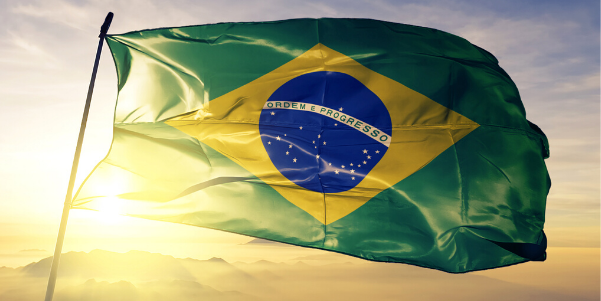Understanding the Brazilian Consumer
15 Jan 2020


After its worst recession on record, Brazil is beginning to bounce back. You might have noticed in the last two years, despite its rocky economy, that this developing country’s ecommerce market and mobile infrastructure are growing pretty much as steadily as any other. Your business certainly doesn’t want to dismiss the opportunity to be a part of this growth. But what do you need to know about Brazil’s consumers to enter the market successfully?
At first glance, you’ll notice that Brazil is a young country, with the majority of the population between the ages of 25 and 54. Most Brazilians are affiliated with some form of religion. The population leans slightly female and more than half are considered middle-class.
But there’s so much more to know about this diverse and culture-rich Latin American market if you want to gain a sustainable foothold. Here are some common characteristics to be aware of.
The language
The first thing to know is that not all Brazilians communicate the same. Yes, Brazil is the only Latin American country to speak Portuguese officially, but colloquial and formal variations of the language are very different. And, Brazilian Portuguese and culture are different than the language and culture of Portugal, which was heavily influenced by the French: Brazil takes influence from a melting pot of African and Native American cultures. This means approaching your marketing with attention to diverse cultural and linguistic differences and values. According to Common Sense Advisory’s classic Can’t Read Won’t Buy study, 57% of Brazilian consumers are more likely to purchase products presented in their own language, and 70% look for native-language support. Sixty percent would even switch brands for it! So, do your research and divide your target markets into regional subgroups to precisely address their preferences. Work with native speakers to make sure you’re addressing the right regional dialects. Pro tip: Note that Brazilians do still look for information in English, the dominant language of business and tech online. From a quick search for keywords in Brazilian Portuguese, you’ll see instances of terms like “online,” “interface” and “free.” However, English proficiency in Brazil is generally low—while competition with domestic players is high. You’ll find yourself at a disadvantage if you don’t localize your digital presence for Brazilian Portuguese before launching in-market.Online habits
Digital content is taking over the world, and Brazil is no exception. As Latin America’s largest media market, Brazil enjoys widespread access to online media across a variety of platforms and channels. So, where do Brazilians spend the most time online? How do they consume content? Two words: social media. Brazil ranks fifth in the world for smartphone use and spent more than 90 billion hours in 2018 using social media apps—mostly WhatsApp, Facebook and Instagram. Start with these platforms and create content your market will perceive valuable enough to share and talk about. Mobile-ready apps and websites will be crucial to your success, of course. Pro tip: Brazilians appreciate choice. Can you diversify your online presence across multiple channels? That way, you’ll make information more widely available to the largest possible pool of consumers—all the better to build a perception of convenience and value. Which is key, as you’ll see next.Buying habits
Only a few years ago, Brazil relished luxury spending. Today, more than half of Brazilians are price-sensitive. The recent economic turmoil pushed folks to look for ways to spend less, save more and manage their money conservatively. For example, many consumers have reservations about buying non-essential goods and are easily swayed by price tags. It’s the norm to shop at discount chains, atacarejos (stores that combine retail and wholesale) and retailers selling luxury products at the lowest price. Brazilian consumers tend to shop around for deals before buying, place a strong emphasis on the value they’re getting and are willing to switch to brands that offer the most value for their real. Brazil’s purchasing power has been rebounding at a modest rate of about 1% per year since the recession and consumer confidence is increasing, according to most recent scores. While it’s still relatively low, it is vital to convey your brand’s value and the extra mile you will go for your customers. Brazilians are loyal to brands that look after them well. As long as the price is right. Pro tip: Nevertheless, Brazil spends big on holidays. Add national events like Carnival to your Brazilian marketing calendar for truly local campaigns. Just bear in mind that Brazilian dates for traditional holidays may vary from those in other countries: for example, Father’s Day is the second Sunday in August and Valentine’s Day is June 12.Buying preferences
Make no mistake: lower price points should not compromise quality. Brazil’s economic volatility has done nothing to exhaust its consumers’ appetite for high-end, high-quality products and customer service. Brazilians love highly interactive, personalized experiences. Exclusivity. A personal touch. Market entrants have even been known to accommodate in-home product testing for their customers! So, keep in mind that building loyalty and partnerships in Brazil requires a high-touch approach—perhaps even on-the-ground efforts. On the other hand, that doesn’t mean online business isn’t booming. With improved internet activity, Brazil has become the largest ecommerce market in Latin America and one of the fastest-growing worldwide. About 51% of consumers regularly buy online. And despite competition from homegrown online marketplaces (the strongest force being MercadoLibre), there is still a hot market for foreign goods. (Amazon is still fairly new in Brazil, so no threat there—yet.) There are cross-border barriers to keep in mind, though. According to FocusEconomics, logistics and infrastructure are still developing challenges to overcome, while Brazilians commonly look to domestic brands for currency and payment method support. Localizing for the local currency, the Brazilian Real, will be key to competing with domestic players. Pro tip: The most common payment methods in Brazil? Credit and installments. Three quarters of consumers commonly buy in installments and one third will not buy from a store that doesn’t offer it as an option. Even high earners pay in installments to boost their purchasing power. This financially savvy cultural norm flips on its head what luxury brands might consider typical consumer behavior. And it might complicate payment localization. But on the other hand, this opens up the luxury sector to consumers with lower disposable incomes. Again, the key is the convenience factor. For the majority of Brazilians who pay in installments, consider adjusting your payment structures, but for those who prefer PayPal and cash, you’ll want to offer those options, too.TL;DR: How to find success in Brazil
Let’s boil all this down to a few essentials to remember. Brazilian consumers are:- very much an online, mobile and social breed
- extremely linguistically and culturally diverse
- looking for good value at a good price
- relationship-driven—and want to feel special
- diversifying marketing channels and buying options
- segmenting and localizing for specific linguistic, cultural and demographic differences
- offering convenience, quality and personalized experiences above all
